PROTECTED CROPS: PLANT BREEDING RIGHTS
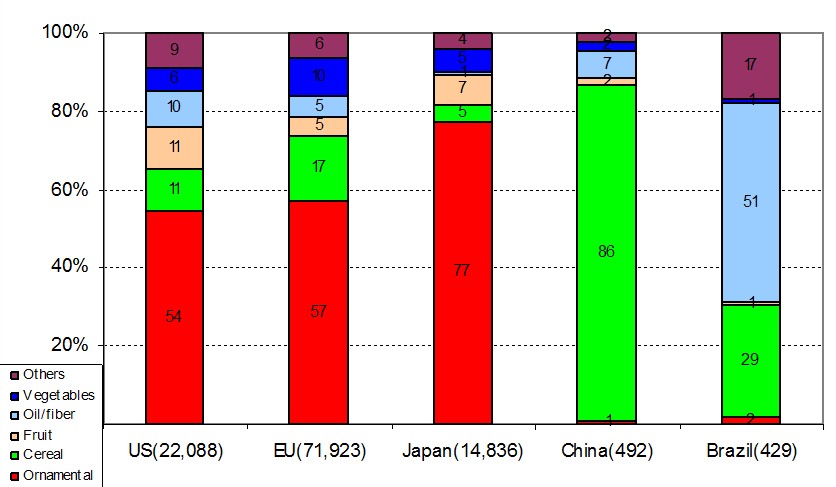
UNITED STATES
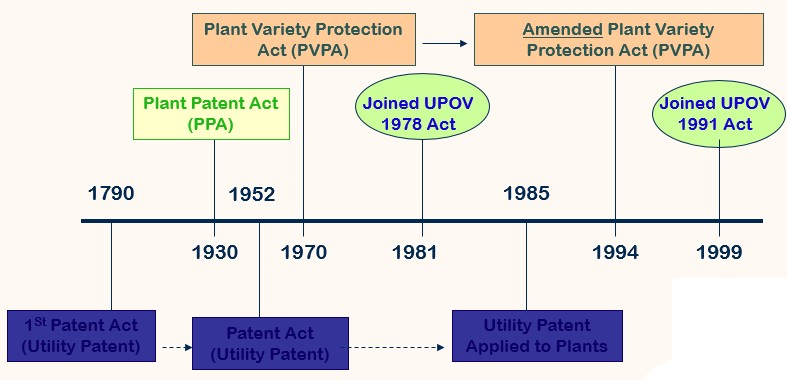
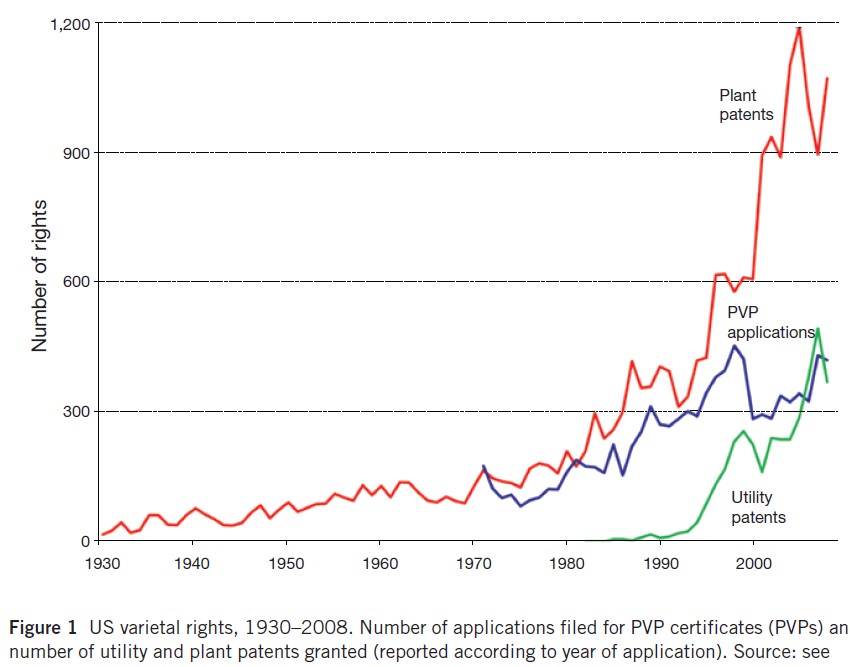
41% of all IP rights lodged 2000-2008 (~1600 ⁄ yr): vs. 1930-1940 (~40 ⁄ yr)
Plant patents > PVP > Utility Patent (...~2005)
Plant patents = Utility Patent > PVP (2005 - today)
US PVP: BY CROP CLASSIFICATION


Increasing PVP (vegetables, grasses, cereals, oilseeds)
PVP vs. PPA & Utility Patents (2000-2008)
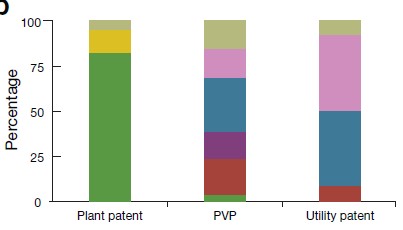
Plant patent (ornamentals and fruits)
PVP (diverse crops)
Utility patent (predominantly cereal--corn: 46%--and oilseed: 38%--soybean)
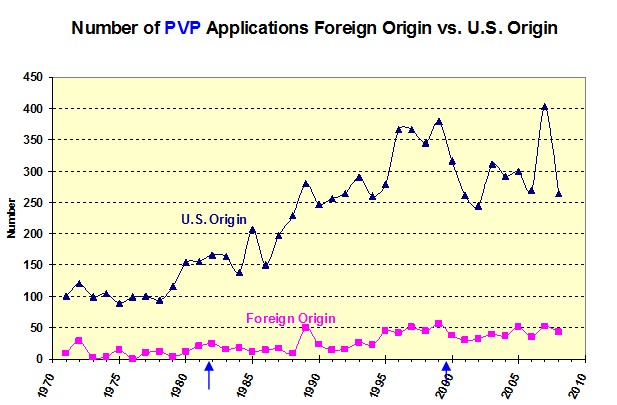
Majority of increased PVP applications of domestic origin.
Applicants
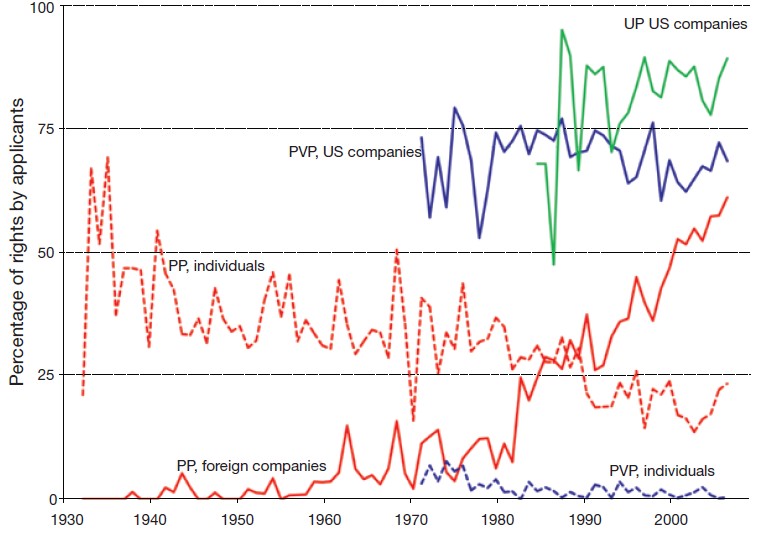
Majority of PVP applications--vs. 100% of utility patents--by industry.

Majority of PVP applications--vs. 100% of utility patents--by industry.
...vs. increasing foreign plant patents (floriculture: cut flowers, bulbs, nursery stock)
IP Rights Concentration
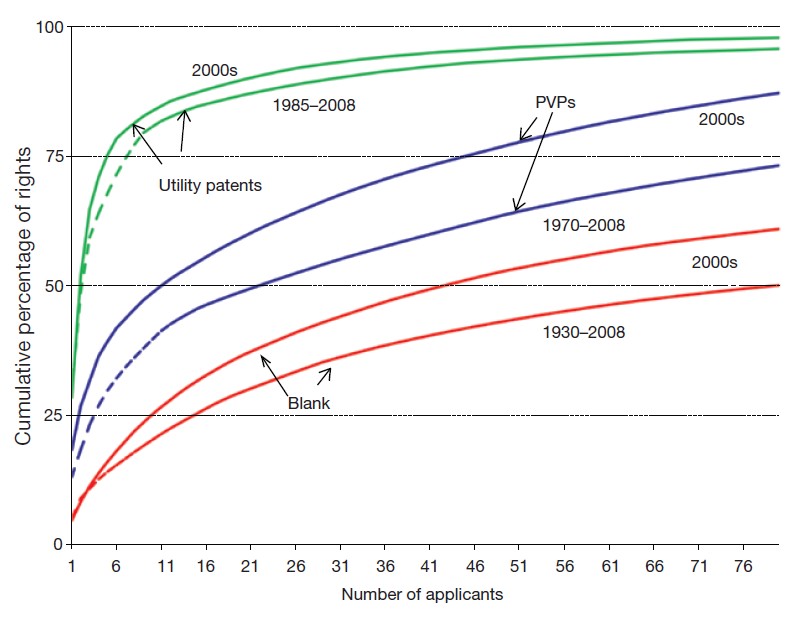
PVP ownership concentration intermediate between that of utility and plant patents.
Top 10 IP right applicants (PVP vs. Utility patents vs. Plant patents)
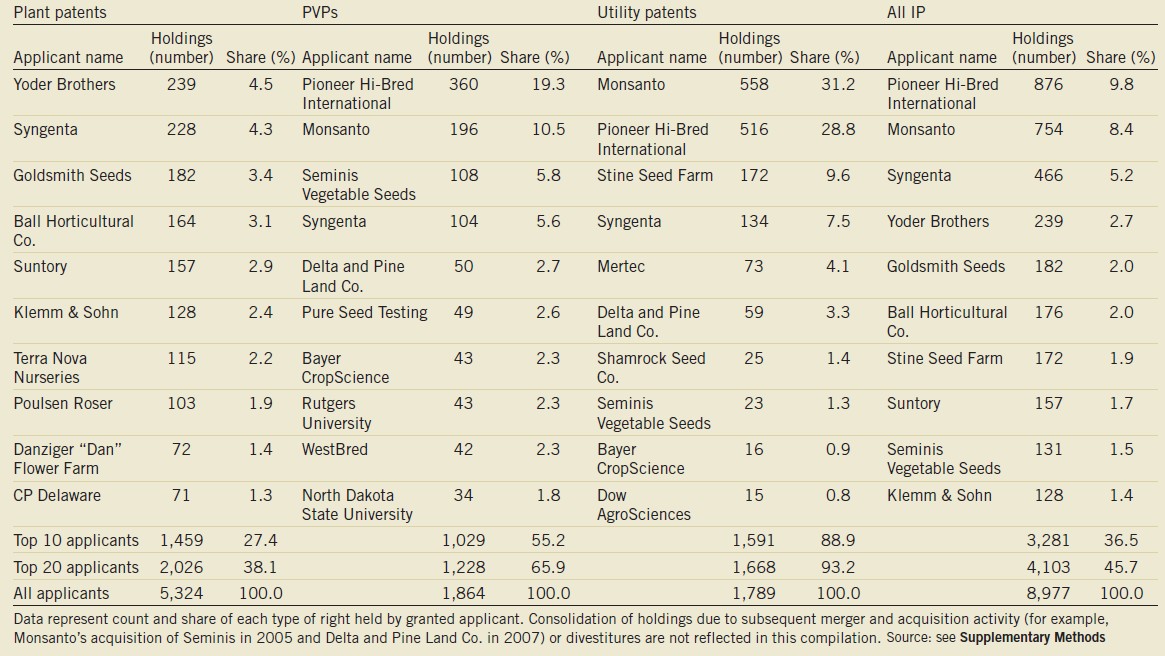
The NEW 'Big Three': Pioneer, Monsanto, Syngenta
Plant Variety Protection Act (PVPA): 7 U.S.C. §§ 2321 et seq.
- Administered by U.S. Department of Agriculture (USDA)
- Enacted in 1970, Amended in 1994
- Plant must be New, Distinct, Uniform and Stable (NDUS)
- In U.S. applies only to sexually reproduced plants and tuber propagated plants
- 20 (all other plants) to 25 (trees and vines) year protection from date of grant
- Exclude others from selling, offering for sale, multiplying, conditioning, importing, exporting and stocking the variety
- Breeder's exemption
- Farmer's exemption
- System is comparatively cheaper to operate than utility patent regimes
- Germplasm returns to public domain upon expiration of PVP term